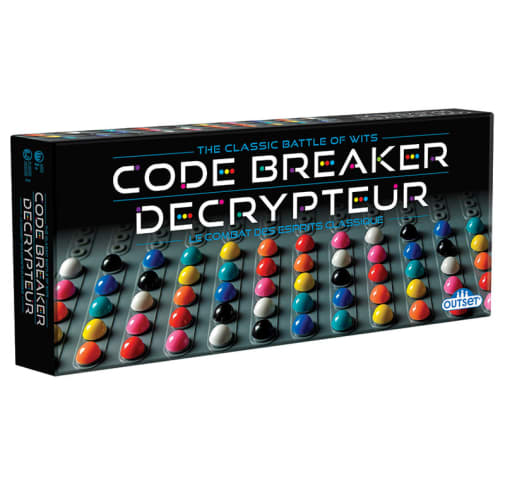Go head-to-head in this two-player game to develop and use critical thinking and logic skills. Players take turns creating codes that are difficult to crack and alternately work to break their opponent’s codes in the fewest possible guesses.
How It Works: Choose a player to start the game as the code maker. The code maker uses pegs in eight different colors and creates the code by placing five pegs of different colors in a secret compartment in slots numbered 1-5. The second player is the code breaker and will have up to twelve tries to guess the correct code. Using the first row of peg slots on the top of the board, they place five different colored pegs in positions 1-5 to represent their guess of the code. The code maker responds by placing a row of small pegs across from the colored pegs, which indicate a response to the guess. Black pegs indicate a correct guess of both the color and position while a white peg indicates only a correct color placement.
Play continues with the code breaker making further attempts to guess the code while the code maker responds to each guess in the same manner until the code is cracked. Depending on how many attempts it takes to solve the code, the code breaker advances their score-tracking marker anywhere from 4 to 12 spots in the score track – with no scoring points earned if they do not guess the code. Play alternates between code maker and code breaker roles each round. Since there are 30 spots on the score track, the fewer guesses each player uses to crack the code, the more spaces they can advance each round. The first player to reach the end of their score tracker wins!
Code Breaker is easy to learn and quick to play. Because there are so many possible code combinations, this game provides many varied hours of 2-player challenges.
